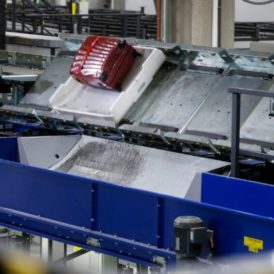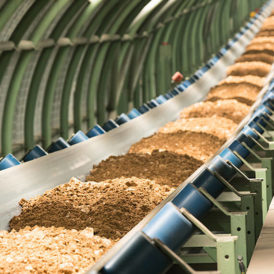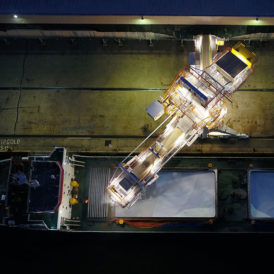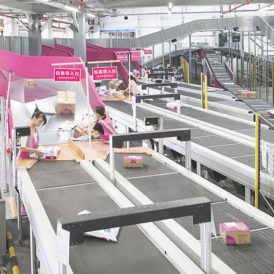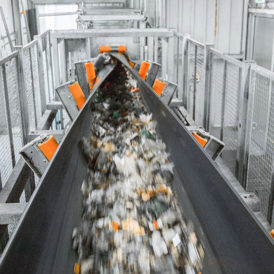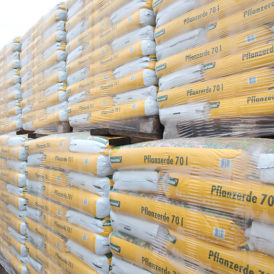-
- Baggage handling systems
- Logistics Systems Technology
- Conveying Technology
- Opencast Mining Systems
- Stockyard Systems
- Mineral Processing
- Port Technology
- Loading Technology
- Filling Technology
- Palletising Technology
- Packaging Technology
- Airport Software Suite
- Automated Container Unloader
- BEUMER autover® Independent Carrier System
- Baggage Loader
- Baggage Manipulator
- Baggage Unloader
- CrisBag® Independent Carrier System
- CrisBag® Self Bag Drop
- CrisBelt® Conveyor System
- CrisCheck® Check-In Conveyor
- CrisClaim® Baggage Carousels
- CrisStore® Dynamic Racking Solution
- Security Screening
- Tilt-Tray Loop Sortation System
- CEP Software Suite
- Warehouse Control System
- Automatic Parcel Singulator
- BEUMER Tipping Station
- BG Line Sorter
- BG Parcel Belt Conveyor
- BG Sorter® CB Cross-Belt
- BG Pouch System
- BG Sorter® ET Tilt-Tray
- Air-supported belt conveyor
- Apron Conveyors
- Belt Apron Conveyors
- Belt Bucket Elevators
- Bucket Elevators
- Central Chain Bucket Elevators
- Components
- Conveyor Systems for Alternative Fuels (AFR)
- Drive Stations
- Feeding Hoppers
- Heavy Duty Belt Bucket Elevators
- Hopper Cars
- Mobile Conveyors
- Overland Belt Conveyors
- Pipe Conveyors
- Screw conveyor
- Shifting Heads
- Tripper Cars
- Troughed Belt Conveyors
- U-Shape Conveyors
- Bucket Wheel Excavators
- Bucket Chain Excavators
- Belt Wagons
- Mass Distributors
- Crawler-Mounted Conveyor Bridges
- Crawler-Mounted Spreaders
- In-Pit Crushing Systems
- Cable Reel Cars
- Transport Crawlers
- Stackers
- Semi-portal Scrapers
- Portal Scrapers
- Side Scrapers
- Slewing Scrapers
- Bridge-type Reclaimers
- Bucket Wheel Reclaimers
- Stacker Reclaimers
- Circular Stacker-Reclaimers
- Customer Support
-
-

The problem
Managers at sorting centres sometimes encounter a problem but are unable to determine what is causing it – and are therefore unable to fix it. For example, managers at one parcel sorting centre noticed that the recirculation rate for packages was far greater than it should be. They knew that this was because operators were unable to empty chutes fast enough, so they kept getting blocked. This excessive recirculation was hampering operations and limiting the efficiency of the centre.
Data analysis revealed that there was uneven parcel distribution to the chutes in the system. Some chutes were heavily used, whereas others were almost unused. This meant that some operators could not keep up with arriving parcels while others had nothing to do. Operators were also having to walk long distances between chutes (up to 16 km per day), which caused fatigue and wasted valuable time.

The Solution
Data from a similar site in the network showed that the allocation of discharged items to chutes at this site was chaotic in comparison. This caused the observed situation where during peak hours operators were unable to satisfy system demand and chutes filled up and became blocked or jammed.
Based on this data, site managers were able to even out the distribution of parcels to chutes, which spread the workload more equally among the operators. They could also efficiently redirect operators to troubled areas. This eliminated the problem of blocked chutes and also reduced walking distances for operators.
The Result
By evening out distribution to the destination chutes, the site reduced the recirculation rate because chutes were no longer getting blocked. This meant higher capacity in the system and a greatly increased throughput.
The number of packages that were discharged at the first attempt (excluding rejects) increased by 3%. Even more impressively, the number of blocked chute errors fell by 19%.
-
3 %
Increase of number of packages discharged on first attempt -
19 %
Decrease of number of blocked chute errors
